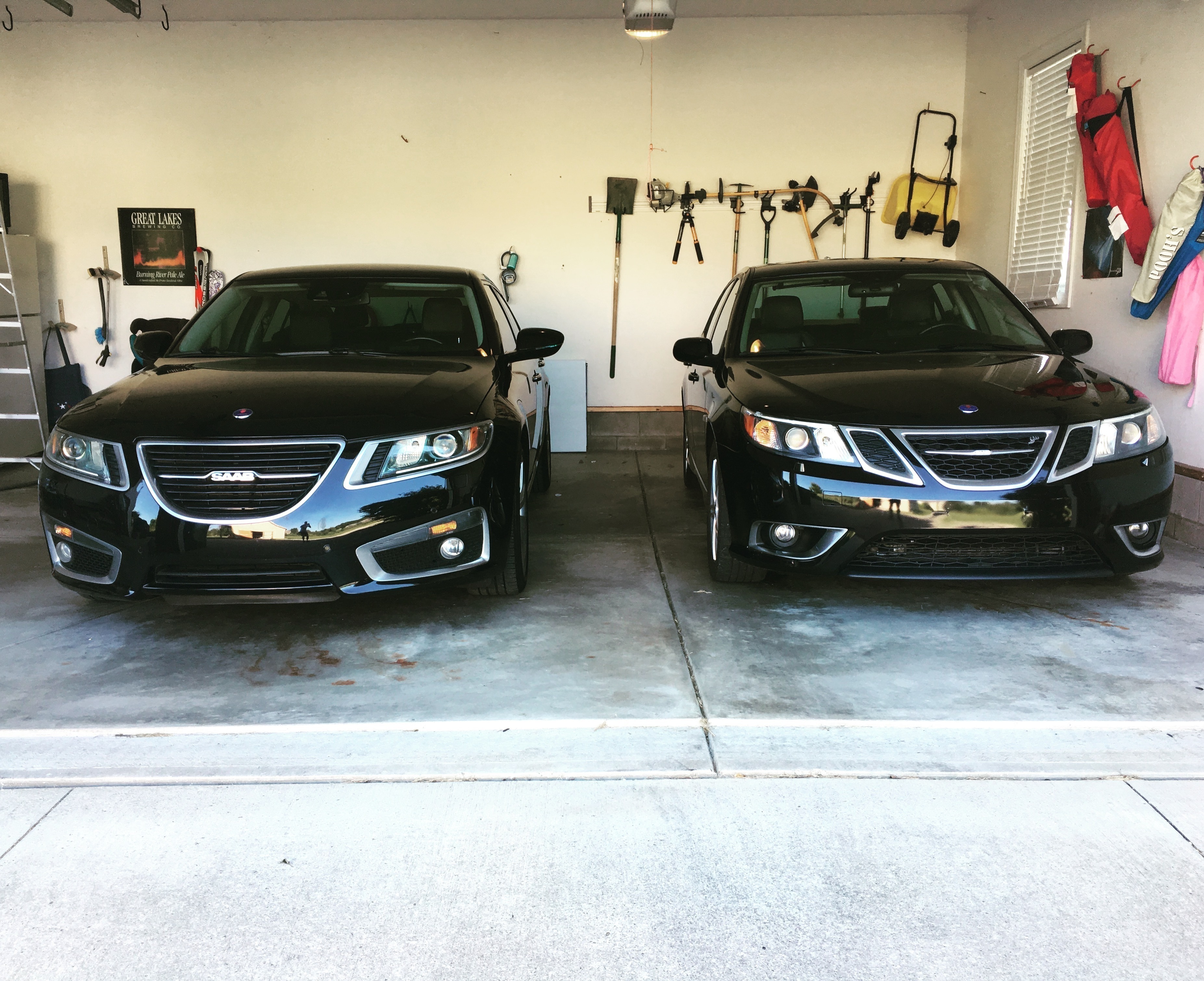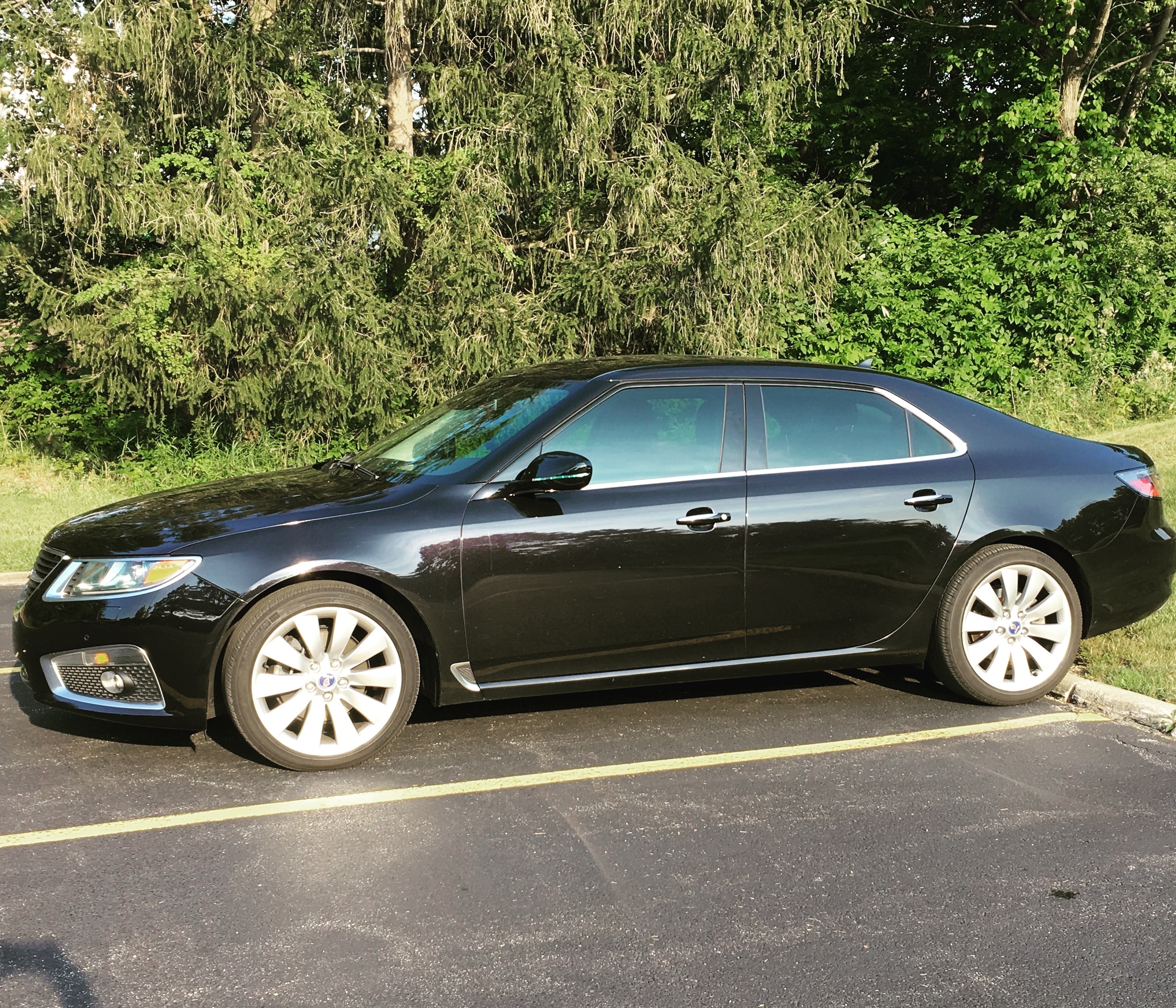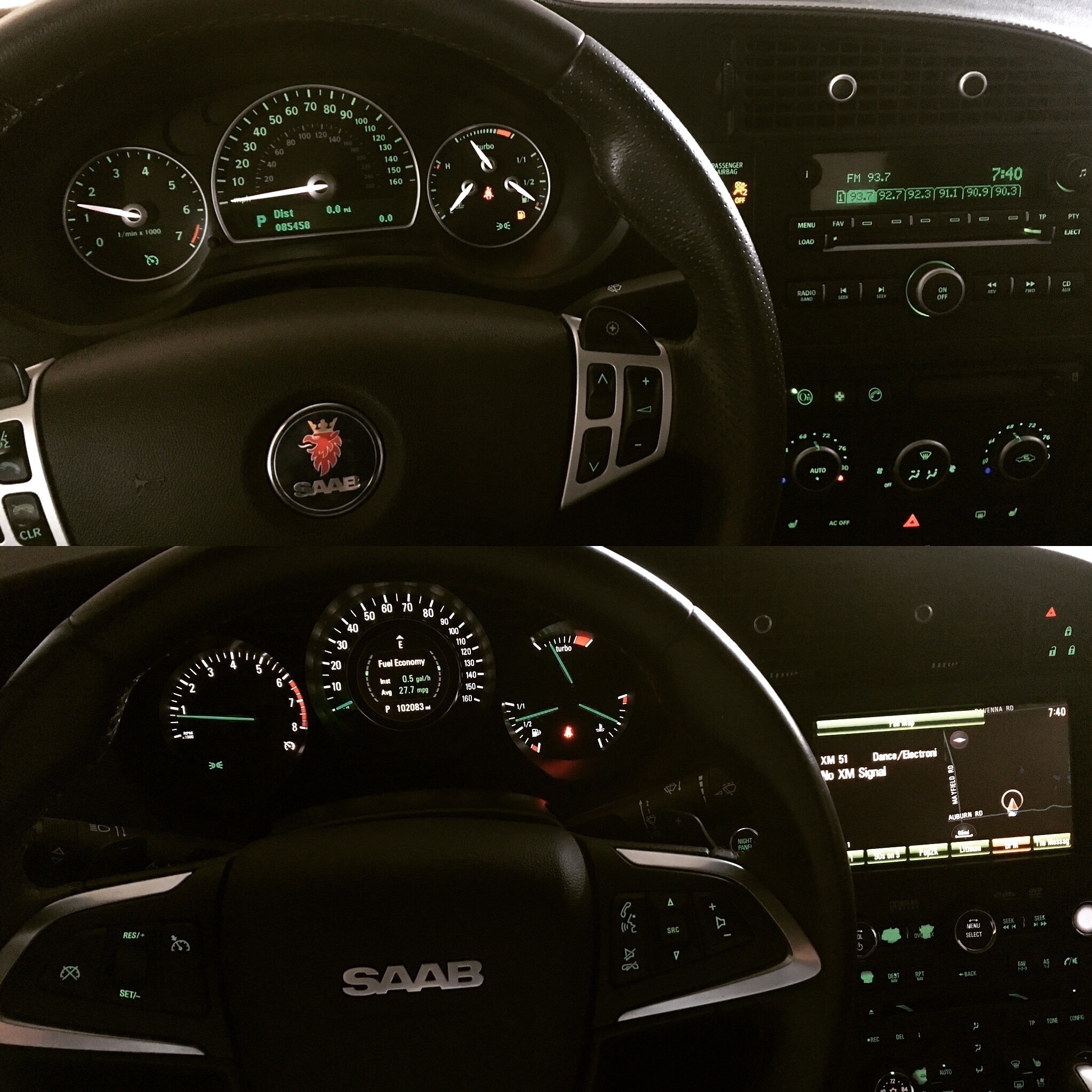In 1945, Saab Automobile group was spun out of Saab AB, the Swedish jet manufacturer, with a goal of using their military technology to compete in the consumer automobile market. From the beginning, their engineering team was willing to ignore established tropes, and try new things. The first car, the 92 was designed to have the silhouette of an airplane wing, and had a 2-stroke engine, with a clever approach to keeping the mixed oil and gas lubrication flowing, even while coasting.
 In 1989, GM purchased 50% of the recently restructured group, with an option to purchase the other 50% later — which they exercised in 2000, in an attempt to establish Saab as an American-owned but European-heritage alternative to German luxury cars. During the GM era, the Swedish engineers were pushed to normalize their approach — although they frequently rebelled, re-thinking and re-adding quirky changes to the GM-platformed vehicles, improving their safety, reliability and uniqueness. Following GM’s financial troubles in the early 2000s, Saab was jettisoned by their American owners and purchased by Dutch supercar maker, Spyker. Although Spyker had big ambitions for Saab, and produced a truly stunning concept car (appropriately called the Phoenix) they too fell on financial hard times. After a failed attempt to sell the brand and IP to a Chinese car manufacturer in 2012, the Swedish government stepped in and purchased the manufacturing assets, creating the National Electric Vehicle company (NEVS), which managed to produce a small number of re-engineered 93s in 2014, including an all-electric prototype, before restructuring themselves to sell new electric car technology with, and to, the Chinese, and relinquishing the brand back to Saab AB (who still make jet planes!)
In 1989, GM purchased 50% of the recently restructured group, with an option to purchase the other 50% later — which they exercised in 2000, in an attempt to establish Saab as an American-owned but European-heritage alternative to German luxury cars. During the GM era, the Swedish engineers were pushed to normalize their approach — although they frequently rebelled, re-thinking and re-adding quirky changes to the GM-platformed vehicles, improving their safety, reliability and uniqueness. Following GM’s financial troubles in the early 2000s, Saab was jettisoned by their American owners and purchased by Dutch supercar maker, Spyker. Although Spyker had big ambitions for Saab, and produced a truly stunning concept car (appropriately called the Phoenix) they too fell on financial hard times. After a failed attempt to sell the brand and IP to a Chinese car manufacturer in 2012, the Swedish government stepped in and purchased the manufacturing assets, creating the National Electric Vehicle company (NEVS), which managed to produce a small number of re-engineered 93s in 2014, including an all-electric prototype, before restructuring themselves to sell new electric car technology with, and to, the Chinese, and relinquishing the brand back to Saab AB (who still make jet planes!)
A few good things happened during these final years of Saab. One was the establishment of an independent parts company, now known as Orio, with rights (and molds) to Saab parts and manufacturing processes. The other good things were a briefly produced SUV, the Cadillac-derived 94-X, and its brother, the Next Gen 95 — the first true overhaul of the venerable 95 since the early 2000s.
They may not have known it at the time, but the NG95 was to be their swan song: a last attempt at a unique and beautiful Saab. Based, in large part, on GM’s Epsilon 2 platform, the NG 95 contains all the modern tech Saab fans had been pining for, while retaining Saab’s quirky style, and obsession with performance and safety. Only 654 NG 95s were produced for North America in 2010, and just over 2700 in 2011.

I have loved my 2009 93, and enjoyed fixing it up and lightly customizing it, using accessories and tech made in the Swedish after-market — in some cases, by former Saab engineers who continued their labor of love long after they were laid off. But when the chance came up to grab a 2010 NG95 for only (after negotiation) $9000 (and after learning that my Tesla won’t be available for another 2 years) I jumped at it.
Mine is a 2010, and only Aero’s were made that year — the high end model, so its loaded: air conditioned seats, all wheel drive, power folding mirrors, an intelligent traffic camera that reads traffic signs and monitors your lane position, and a heads-up display that projects key driving information unobtrusively in your windshield. The backseat entertainment system includes two-channel audio, and dual fold-out displays, linked to the DVD player in the head unit.
It also came with 100,000 miles on it, a cracked windshield, a broken headlight, scratched paint, some broken and loose interior bits, and an apparent dearth of regular maintenance. In other words, a fixer-upper. Fortunately, Saab fans seem to love nothing more than helping each other out, and I’ve already made a new local friend who has multiple Saabs — including a NG 95 in his family. So work is underway on smoothing out the rough edges. Fortunately, its still a blast to drive while I fix it up. Thanks to Saab’s jet plane legacy, every one of them comes with a twin scroll turbo charger that blasts you past traffic with a whoosh that sounds like adrenaline feels.
My 93 has gone to a good home, where it will be stewarded by our pastor’s wife until Ben is old enough for his own jet plane. And I couldn’t be happier with the two years of projects sitting in my garage, stanced to pounce on the highway whenever I get the itch — or just need to drive to work…


